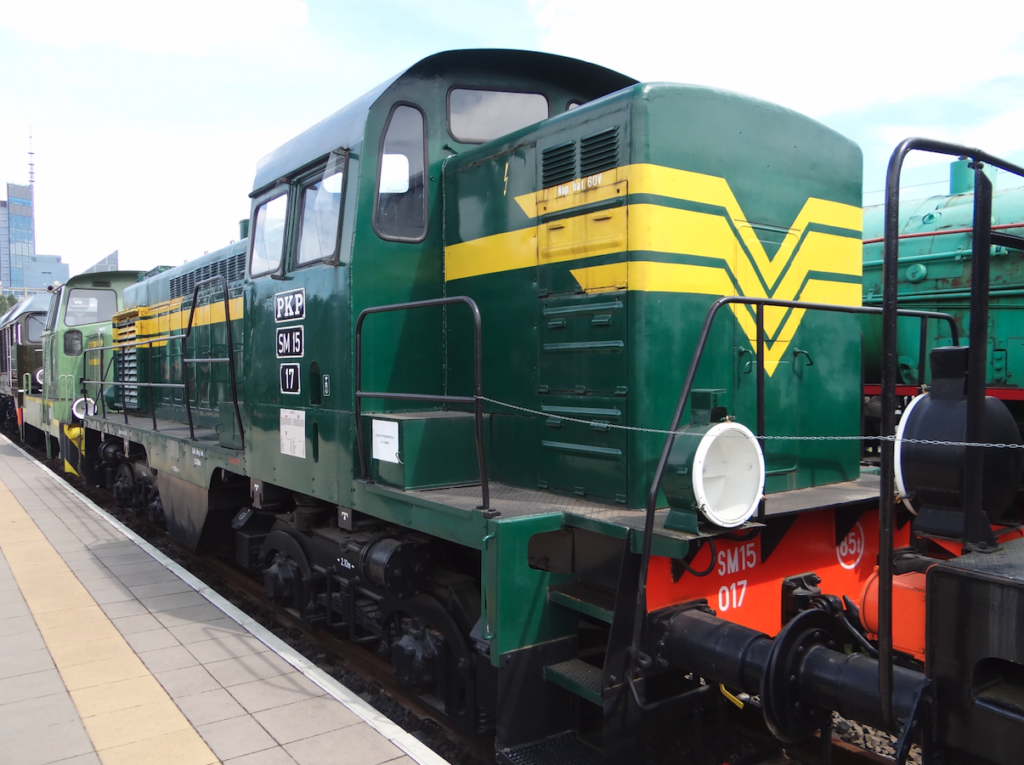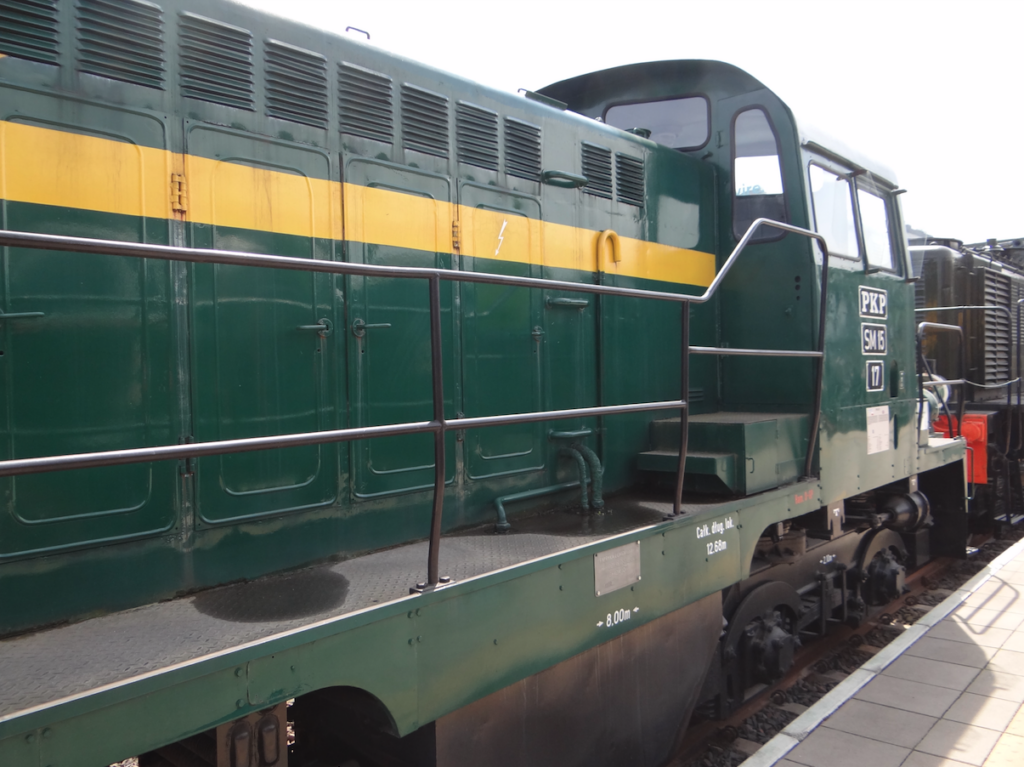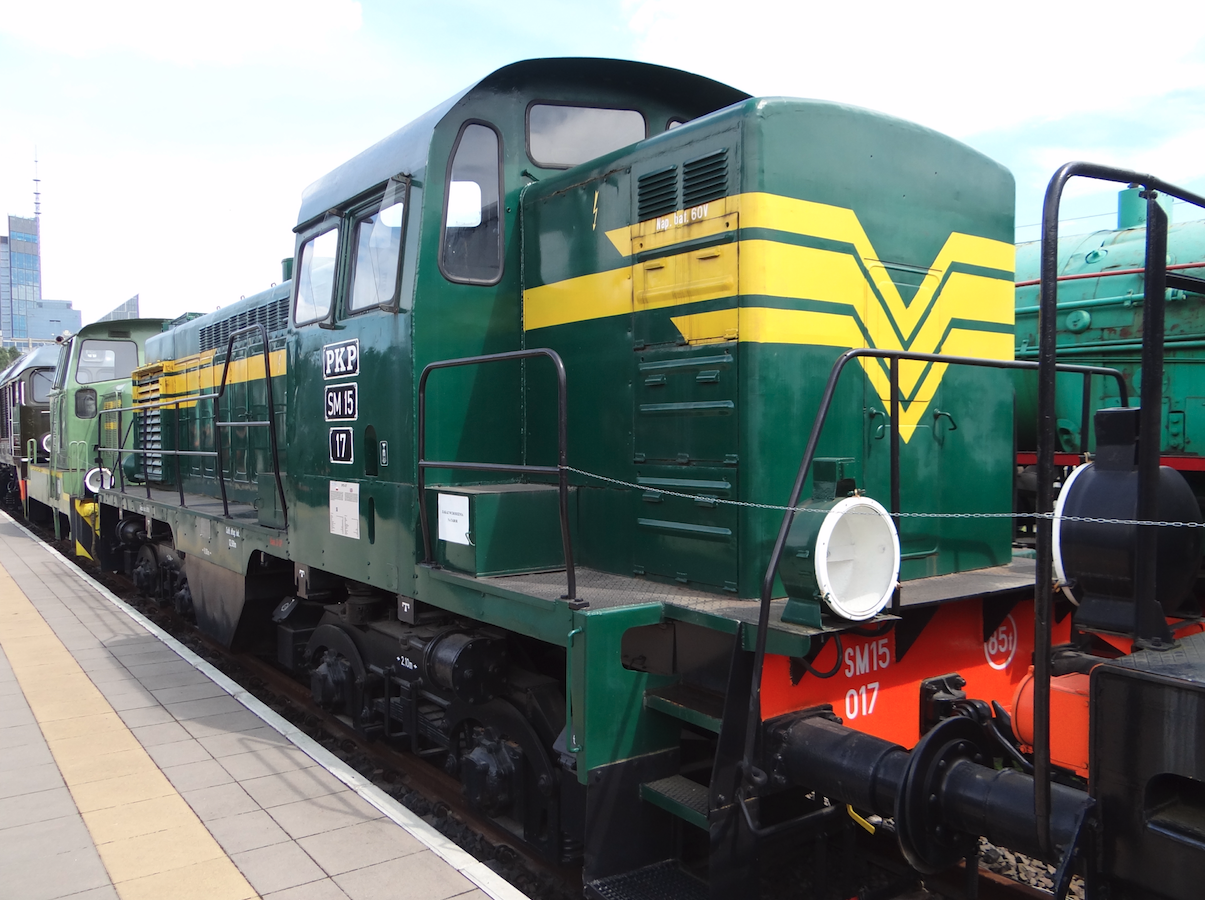Warszawa 2025-02-07
Diesel Locomotive SM15-17.


In 1963, two TGM3 shunting diesel locomotives with hydraulic transmission were purchased in the Moscow State (then CCCP). In the Moscow State (CCCP) by 1975, 3,477 TGM3 family locomotives were built, with hydromechanical and hydraulic transmissions.
The contract also included the purchase of a Soviet license to start production in Poland, as early as 1960. However, there were delays on the Moscow side, mainly due to transmission problems. In 1963, two TGM3 locomotives arrived in Poland and were entered into the inventory on January 9, 1963. However, these locomotives did not meet Polish standards, which is why adaptation work was necessary.
In Poland, the locomotive was designated type Ls750H, and in Chrzanów type 12D. In the Fablok factory in Chrzanów, 55 units were built in the period 1963-1967. Of this number, 25 units were transferred to PKP and designated SM15-003 – SM15-027. The remaining locomotives were sold to various recipients in the industry, under the designation Ls750H. In PKP, a dozen or so locomotives were sent to work in the Kraków railway junction.
There would be no diesel locomotives in Poland if work had not been undertaken on diesel engines; ON. The Central Design Office of the Railway Rolling Stock Industry planned work on a family of diesel engines, with power from 350 HP to 2000 HP. In 1959, the SM25 type locomotive with a hydraulic transmission was built. Only 3 units were produced, due to the failure of the hydraulic transmissions.
On December 8, 1963, the first SM15-03 locomotive underwent a test run on the Chrzanów – Oświęcim – Chrzanów route. On February 25, 1964, this locomotive began its operation. Remember that at that time, tests of the SM42 locomotive were already underway. Since there were problems with the production of components for the SM42 locomotives, it was decided to start conditional production of the SM15 locomotives.
The SM15 type locomotive received a Soviet 12-cylinder four-stroke internal combustion engine, with a power of 552 kW (750 HP), type M753 with turbocharging, water-cooled. It was coupled with a two-speed, two-range hydromechanical transmission GTK-II. The drive was transmitted via cardan shafts to the toothed axle gears on the bogies.
During production, changes were introduced in the form of a new hydraulic transmission (produced by CCCP) UGP750-1200. A V12CD19 engine, designed by Zakłady Mechaniczne named after Marceli Nowotka in Warsaw, was installed in several locomotives.
The locomotive turned out to be unsuccessful. Its traction characteristics were incorrect. There was a high failure rate of the drive system; transmission and engines. The opinion of COBiRTK was unequivocal: the SM15 locomotive did not meet the needs of PKP in its properties, and the SM42 locomotive was much better, although its price was 20% higher than the SM15. Therefore, from 1967, the locomotives were taken out of service and an order was given to immediately discontinue serial production, after 55 units had been built. The SM15 locomotives were very unreliable and were often sent for repairs to Chrzanów. In 1968, the number of SM41 locomotives imported from Hungary doubled, and there were more and more SM42 locomotives. Therefore, more SM15 locomotives were transferred to shunting work in the industry. The operation of SM15 locomotives in PKP ended in 1977.
The SM15-17 diesel locomotive was built in 1965, in the Fablok factory in Chrzanów – the Locomotive Factory named after Feliks Dzierżyński. The locomotive received the factory number Ls750H-7060-1965. From September 30, 1965, the locomotive worked in MD Kraków Płaszów. Its service ended on January 31, 1977, and on that day it was crossed out from the inventory. The locomotive had a mileage of 259,825 km. The locomotive was transferred to a museum in Warsaw. In 2020, the locomotive was renovated to the state of a museum exhibit.
The SM15 locomotive has a B’B’ axle arrangement. Linear speed 58 km/h, freewheeling. Shunting speed 28 km/h. Wheel diameter 1.05 m. Hydraulic transmission. Fuel tank 3,350 liters. Service weight 70,000 kg. Length with buffers 12.60 m. The SM15 locomotives were equipped with a Soviet-made high-speed engine with a power of 750 HP with a hydromechanical transmission. Several locomotives were also equipped with a Polish V12CD19 engine with a power of 800 HP. During production, a modified version of the Ls750Hu with a hydraulic transmission was also introduced for industrial needs.
Written by Karol Placha Hetman
